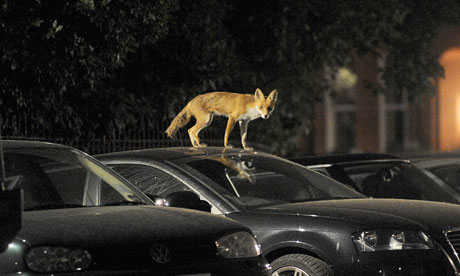Personally, I’d rather watch a family of these:Imagine being able to watch a whole family of these:


Personally, I’d rather watch a family of these:Imagine being able to watch a whole family of these:


If only we'd been around three million years ago in South America! We could've slaughtered all the animals that tried to cross the isthmus "that didn't belong."Hardly a shame. They're a pest animal, deliberately introduced to Australia so a few people could continue the imbecilic tradition of fox hunting. Exterminating them is a good thing; they don't belong in this country.
I dunno. Starting about 40,000 years ago, a large apex predator swept through both North and South America. Those continents turned out okay.Arriving in a country by natural means is considerably different than being introduced by men. For a start an animal arrives naturally probably arrives at the same time as some of its prey or predator so there is still a natural balance.

Collingwood Nick said:I agree with Orac Zen. Let us start by wiping out the foxes. We can deal with white man in due course.
Hardly a shame. They're a pest animal, deliberately introduced to Australia so a few people could continue the imbecilic tradition of fox hunting. Exterminating them is a good thing; they don't belong in this country.
Near here people are more concerned with Mountain Lion sightings than foxes.
http://www.youtube.com/watch?v=vx2nrlt9_Xs
Near here people are more concerned with Mountain Lion sightings than foxes.
http://www.youtube.com/watch?v=vx2nrlt9_Xs
In England, we have a big problem with white tigers in the wild.
Over-anthropomorphizing much, are we?. . . If nothing else, it just makes me mad that poor foxes are being made to pay for the sin of being enslaved and brought to Australia.
Because asshole pet owners are too irresponsible to spay and neuter their pets, that's why.. . . And yes, of course we kill things here, too. It's awful. Feral cats, for example, are captured, put in cages, and apparently almost always killed. Almost four million cats and dogs are euthanized per year. I have no idea why we do this, other than humans besides me are fucking monsters.
I'm not a veterinarian and I don't play one on television, but I would assume foxes are vectors for canine diseases that can be transmitted to domestic dogs, as well as diseases common to all mammals, such as rabies.. . . They get in people's bins, even the heavy big ones, create a mess, dig up gardens, half of them seem mange-ridden, and I wouldn't be surprised to learn they carry other diseases too although I don't know if they're a particular vector for anything transmissible.
Near here people are more concerned with Mountain Lion sightings than foxes.
http://www.youtube.com/watch?v=vx2nrlt9_Xs
In England, we have a big problem with white tigers in the wild.
 .
.
In England, we have a big problem with white tigers in the wild.
That is so funny.
Australia has famously suffered one ecological problem after another whenever a non-native species is introduced by humans. The cane beetle, for example, got a free ride from Hawaii when sugar cane was introduced as a cash crop. Then the cane toad was deliberately introduced to control the beetle. The toads did a great job of eating the beetles -- and everything else! With few natural predators (because of the poison it secretes from glands in its skin), the cane toad is now a major pest.
Oh wow, I didn't know you had Urban Foxes in Glasgow too; but then, I've never been.There's loads of urban foxes in Glasgow. You'll frequently see them along the rail lines. We used to have one run through our garden and I've seen one crossing the street in broad daylight - though that was exceptional.
We use essential cookies to make this site work, and optional cookies to enhance your experience.
